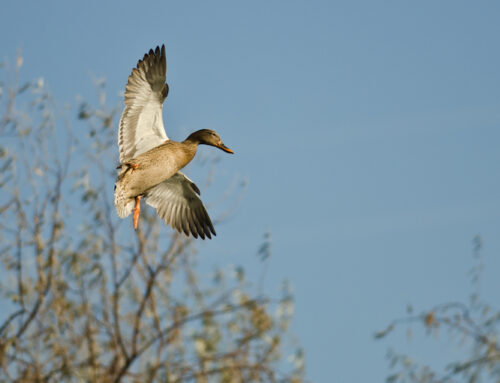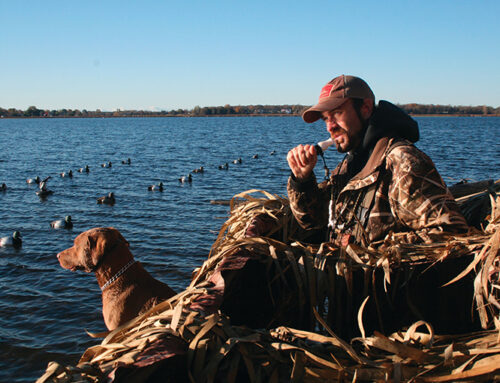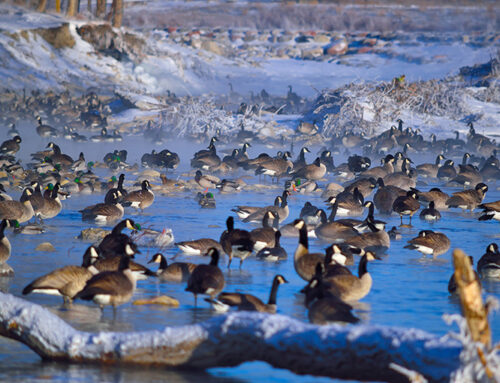To the waterfowler, the duck blind is a sanctuary, a hallowed refuge where lessons are passed from generation to generation, where friendships are forged and strengthened, and where indelible memories are etched into our minds. It’s a place to forget about the toils and struggles of our everyday lives, and it’s where we live out our passion for the great outdoors.
In a much more literal sense, however, a duck blind is a place where we hide while hunting waterfowl. That place could be a box blind, boat blind, layout blind, or just a spot amongst some cattails.
There’s no right or wrong choice to make when it comes to choosing a blind. Each option has its time and place. Whichever option gets you closest to lots of ducks while remaining undetected is the best choice that day.
Many things must be factored into the equation, including cost, manoeuvrability, profile, concealment, and shelter. Most successful waterfowlers adapt their cover according to where and how they’re going to hunt, so they might use multiple blinds over the course of the season.
Here are the pros and cons of the three most common types of duck blinds.
Box blind The box blind is probably what comes to the average waterfowler’s mind when the term “duck blind” is mentioned. Steeped in tradition, it has been the staple of both puddle and diver duck hunters for over a century. Long before the motorized boat blind or portable blind was an option, the box blind ruled supreme. To this day, they’re common along the shores and throughout marshes of huntable habitat.
Pros
A box blind can be built to suit your needs. For many, duck hunting is as much a social affair as anything else, so roominess is key. Others prioritize comfort. If you build your own blind, you can customize it to suit yourself.
Perhaps the box blind’s greatest advantage is the shelter it provides from the elements. There are days when biting wind, pounding rain, or blinding sleet make a hunt almost impossible to endure without cover. When you are tucked into a well-built box blind, however, the elements can almost be forgotten.
Another advantage is that open-water blinds allow opportunities to gun puddle and diver ducks alike.
Cons
Box blinds can leave a large profile, which may spook approaching birds. Certain wind directions may make gunning difficult, while some may create angles of approach for incoming waterfowl in which the profile of the blind is very visible. Ducks often become wary of box blinds as they begin to associate them with hunting pressure.
Lastly, to provide sufficient cover, most box blinds don’t offer more than a 180 degree range of shooting. If built to allow room for numerous hunters and their equipment, the blind’s profile is increased, which can be detrimental to hunting. On the other hand, if built too small, shooting from the blind can be difficult.
Boat blind
In recent years, after-market products have made it easy to convert a duck boat into a duck blind, leading to an increase in the popularity of the boat blind. For anyone with a duck boat, it’s an option with considerable benefits.
Pros
The biggest selling feature of the boat blind is the flexibility to hunt any location. Factor in that it enables waterfowlers to play the wind and get under the flight, and it’s a wonder we don’t all have one. The boat blind can be set up right along the shoreline or anchored a few hundred yards out, which translates into the ability to target puddle ducks and divers from the same boat. Affixing a blind to your boat doesn’t limit you to the boat, it just gives you that much more versatility. Throughout the season, you can continue to hunt even though water levels and hunting pressure dictate the need to change locations.
Cons
Every boat has its limitations, depending on its size. A 20-foot steel boat with a large outboard, for example, may not be able to get into shallow water along the shoreline. A 14-foot jon boat isn’t going to be sturdy, or even safe, in deep water when the wind is howling.
When set up in open water, the boat blind’s profile seems to be a detriment to puddle duck hunting.
Bulrushes
When I say bulrushes, I’m actually referring to any natural vegetation that provides cover from ducks. It could be that you’ll hide in the cattails on the lakeshore, hunker down behind some fallen timber, or blend in with the rocks along a breakwall.
Pros
In my opinion, this is the most lethal way to hunt waterfowl. The primary advantage of using the natural landscape is the absence of a large foreign structure that’s discernable or casts a profile.
Positioning yourself outside your spread is also a benefit of this approach, and it should have birds working closer to you because they’ll be looking at your spread, not some bulky object near the desired landing zone. Other notable benefits are a 360-degree shooting arc, along with more freedom and flexibility to watch birds as they approach.
Moreover, you can pretty much set up anywhere. Sometimes all it takes to be successful is to get away from the areas the birds are associating with danger.
Cons
As the season wears on, it can be hard to find sufficient cover close to the water’s edge. Lack of overhead cover is an issue, so you must remain still when hunting this way. Working the shoreline might also require some forward thinking, such as locating dry spots nearby to set shell bags and extra layers of clothing.
There are times when the elements are simply too overwhelming to endure. A biting wind cutting across a cold lake can be enough to send even the most hardened waterfowler packing, and bulrushes offer no reprieve from a cold downpour.
It’s your call
One word sums up the purpose and value of any blind: concealment. All of these duck blinds are viable options for the waterfowler, and each has its advantages and disadvantages.
Whether you plan to limit on greenheads, black-footed flyers, or are happy to take whatever comes in, match your blind to your hunt conditions and you’ll reap the rewards.






Leave A Comment